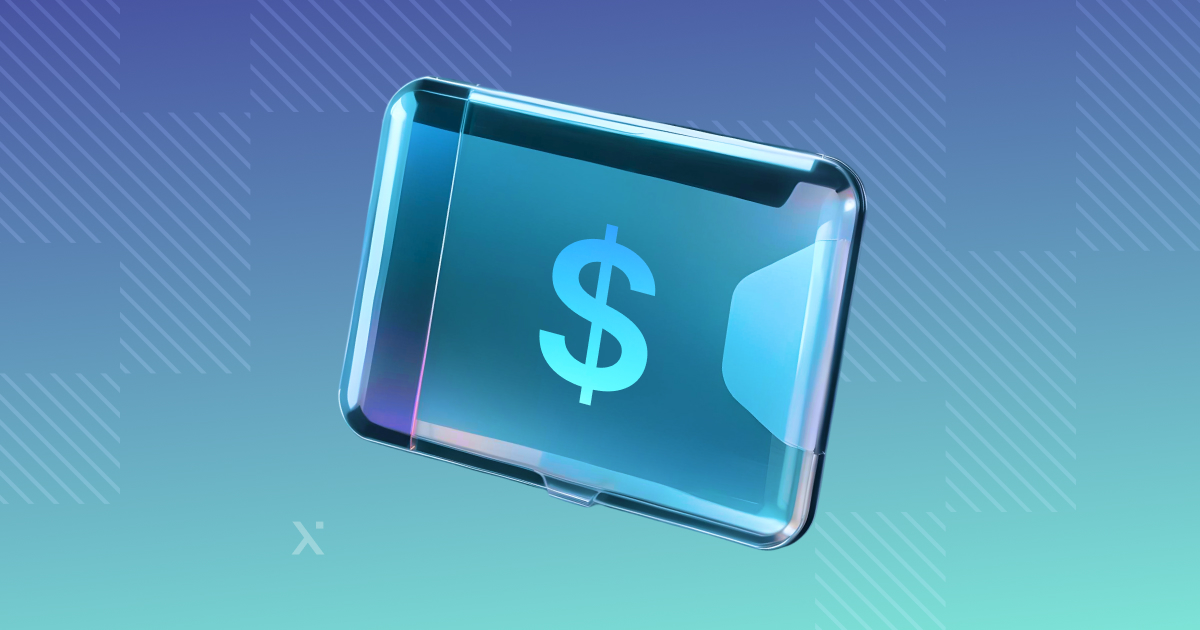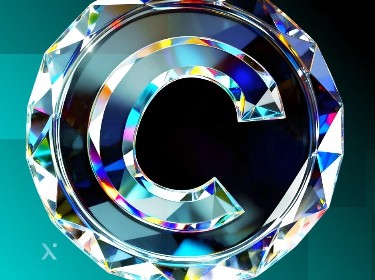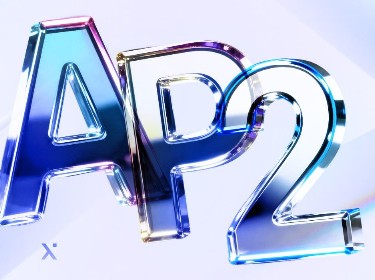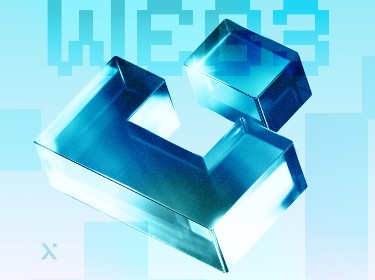So, you're diving into the wild, wonderful world of cryptocurrency. But almost immediately, you'll bump into a question that feels fundamental, maybe even a bit daunting: where, and how, do you actually keep this digital money?
It’s not like you can stuff Bitcoin under your mattress. This brings us straight to the heart of a crucial decision every crypto user faces, the great custodial vs non-custodial wallet debate. Get this right, and you’re setting yourself up for a smoother, more secure crypto journey. Get it wrong? Well, let’s just say it can lead to some serious headaches, or worse.
This isn’t just tech specifics, it’s about control, security, and your access to the burgeoning universe of digital assets. We’ve collaborated with our blockchain development team and are going to break down exactly what these terms mean, explore the critical difference between custodial and non-custodial wallet options, and arm you with the knowledge to pick the champion for your needs. Because in crypto, knowledge isn’t just power – it’s protection.
The concept of crypto wallets
First off, let’s get one thing straight: a crypto wallet isn’t like the leather thing you stuff in your back pocket, bulging with loyalty cards and old receipts. Think of it more like a hyper-secure, personal digital vault combined with a unique, unforgeable signature. It’s your gateway to interacting with the blockchain.
At the core of any crypto wallet are two key components (pun intended!):
- Public keys: This is like your bank account number. It’s the address you can share with others to receive cryptocurrency. No harm in this floating around; it’s designed to be public.
- Private keys: Ah, now this is the crown jewel. Your private key is a secret, cryptographic code that proves you own your crypto and allows you to spend it or move it. If someone else gets your private key, they effectively are you in the crypto world. It’s like giving someone the only key to your real-world vault and the PIN to your debit card, all rolled into one. Guard it with your life.
- Seed phrase (or recovery phrase): Because remembering a long string of random characters (your private key) is a nightmare, most wallets, especially the kind we’ll focus on, give you a “seed phrase.” This is typically a list of 12 to 24 common words. If your wallet device is lost, stolen, or broken, you can use this phrase to regenerate your private keys and recover your funds in a new wallet. This phrase is, therefore, just as critical as your private keys.
When you make a transaction, your wallet software uses your private key to “sign” it, creating a digital signature that proves you authorized the transfer. This signature is then broadcast to the network for confirmation. The beauty is, you prove ownership without ever revealing your private key to the network.
Understanding this “keys” business is absolutely fundamental because how these keys are managed is precisely what differentiates a custodial wallet from its freedom-loving cousin, the non-custodial wallet.
Blockchain vs. DLT: Full Guide
Private Blockchain Development Explained
Blockchain Technology ETFs: A Smarter Way to Invest in Crypto Without Buying Bitcoin
Custodial wallets: who’s really in charge?
What is a custodial wallet? Imagine you sign up for a popular cryptocurrency exchange. You buy some Bitcoin, and it sits there in your account on the exchange. Congratulations, in most cases, you’re using a custodial wallet. Essentially, a third party – the exchange, a broker, or some online service – holds your private keys for you. You have an account, a login, a password, maybe two-factor authentication (2FA), but the actual cryptographic keys that control your crypto? They’re in the custodian’s possession.
Why would anyone go for this?
![]()
Simple to use
If you can handle email or online banking, you can handle a custodial wallet. The setup is usually quick, and there’s no complex tech to learn upfront. This is a huge draw for beginners dipping their toes into crypto.
A familiar safety net
Forget your exchange password? Usually, there’s a “forgot password” link, just like any other web service. The custodian can help you regain access to your account (though this doesn’t mean they can magically recover funds if they suffer a catastrophic internal loss of keys).
Everything’s integrated
Want to trade quickly? Your funds are right there on the exchange, ready to go. Staking, lending, and other services are often just a click away. It’s a walled garden, but a convenient one.
Lower initial intimidation factor
No talk of seed phrases or private key management to scare you off on day one.
The trade-offs
“Not your keys, not your crypto”
You’ll hear this phrase a lot in the crypto space, and for good reason. If you don’t hold the private keys, you don’t technically have final, absolute control over your crypto. You’re trusting the custodian to be honest, competent, and solvent.
The giant honeypot – security risks
Exchanges and custodial services are prime targets for hackers. They hold vast amounts of crypto, making them very attractive. While reputable ones invest heavily in security, breaches have happened and can be devastating.
Counterparty risk
Your custodian is a business. Businesses can fail, face regulatory crackdowns, or even (rarely, but it happens) turn out to be scams. If your custodian goes under or has its assets frozen, getting your crypto back can become a legal nightmare, or simply impossible.
Censorship & restrictions
Because the custodian controls the keys, they can also freeze your account, block withdrawals, or even seize your assets if compelled by law enforcement or if you violate their terms of service (which you may not have read in full detail). This is a far cry from the censorship-resistant ideal many associate with crypto.
Limited menu
You’re generally stuck with the cryptocurrencies the custodial wallet provider decides to support. Want that hot new altcoin? You might have to wait, or it might never arrive on their platform.
KYC/AML is usually standard
Know Your Customer (KYC) and Anti-Money Laundering (AML) regulations mean you’ll typically need to provide personal identification to use these services. For privacy advocates, this is a significant downside.
For many, the convenience of a custodial wallet is a perfectly acceptable trade-off, especially for smaller amounts or for active trading. But it’s crucial to go in with your eyes wide open.
Understanding the non-custodial wallet
Now, let’s flip the script. What is a non-custodial wallet? Imagine you are your own bank, your own vault manager, your own security chief. That, in essence, is the spirit of a non-custodial wallet. Simply put, with a non-custodial wallet (sometimes called a self-custody wallet), you and only you hold and control your private keys. No third party has access to them unless you royally mess up and give them away.
This is where the non-custodial wallet meaning truly hits home: it’s about ultimate control and financial self-sovereignty. When you properly set up and secure a non-custodial wallet, no one can stop you from sending, receiving, or holding your crypto.
How do they operate?
Non-custodial wallets come in several flavors:
Software wallets
These are applications you install on your computer (desktop wallets like Exodus or Electrum), your phone (mobile wallets like Trust Wallet or MetaMask Mobile), or as browser extensions (MetaMask, Phantom – super popular for DeFi and NFTs).
Hardware wallets
These are small, physical devices (think a specialized USB stick from brands like Ledger or Trezor) that store your private keys offline, providing a massive security boost. They sign transactions internally, so your keys never touch your internet-connected computer.
Paper wallets
An older method involves printing your public and private keys (often as QR codes) on a piece of paper and storing it securely. Less common now due to practicality and risks if not done perfectly.
The linchpin of a non-custodial wallet is that sacred seed phrase (or recovery phrase). When you first set up the wallet, it will generate this list of 12-24 words. You must write this down, in the correct order, and store it somewhere incredibly safe – think offline, fireproof, waterproof, maybe even in multiple secure locations. Never store it digitally (no photos, no text files in your cloud storage – just don’t!). This phrase is your only backup if your device is lost, damaged, or stolen. Lose the seed phrase, and you’re likely kissing your crypto goodbye forever. Seriously, this isn’t a drill.
Altcoin Development: Why You Need to Create Your Own Altcoin
How to Develop a Crypto Arbitrage Bot: a Detailed Guide Based on PixelPlex's Expertise
Why go non-custodial?
![]()
True ownership and unfettered control
This is the big one. “Your keys, your crypto” becomes your reality. You are the undisputed owner.
Boosted security
While you become responsible for your own security, you eliminate the risk of a custodian’s platform being hacked and your funds vanishing. Your security is in your hands.
Censorship resistance
No central entity can freeze your funds or block your transactions on a whim (network-level censorship is a much broader, more complex issue). You can transact with anyone, anywhere, anytime, as long as the underlying blockchain is running. But remember to use transaction monitoring software.
Enhanced privacy (usually)
Creating a non-custodial wallet often doesn’t require you to submit personal identification directly to the wallet provider. However, how you get crypto into or out of that wallet (e.g., via an exchange) might still involve KYC.
Gateway to the decentralized web (DeFi, dApps, NFTs)
This is a huge driver. Want to lend your crypto on Aave, trade on Uniswap, or buy that cool NFT on OpenSea? You’ll almost certainly need to connect what is a non-custodial crypto wallet like MetaMask. These platforms are built for direct, peer-to-peer interaction, which custodial wallets generally can’t facilitate. Plus, they implement cutting-edge crypto gateway development practices.
Broader horizons for coins
Non-custodial wallets often support a much wider array of cryptocurrencies, including brand new ones or those from smaller projects, as they don’t need a central entity to “approve” a listing.
The drawbacks
Steeper learning curve
Let’s be honest, getting your head around private keys, seed phrases, transaction fees (gas), and secure practices takes time and effort. It’s not plug-and-play like an exchange account.
You are your own customer support
This is critical. If you lose your seed phrase or send crypto to the wrong address, there’s no one to call. No “forgot my seed phrase” button. The responsibility is 100% yours. This aspect can be terrifying for some, and it’s a key reason why understanding what is a non-custodial wallet fully is so important before diving in.
Vulnerability to user blunders
Phishing attacks (fake websites tricking you into entering your seed phrase), malware designed to steal keys from your computer, or even just a poorly stored seed phrase can lead to total loss. Vigilance is your constant companion.
Hardware wallet cost
For the best security with a non-custodial wallet, a hardware wallet is highly recommended, and that means an upfront cost (typically $60-$200).
Choosing a non-custodial wallet is a powerful step towards financial autonomy, but it demands respect for the responsibility it entails.
Custodial vs non-custodial wallets
Okay, you’re probably getting the picture. These two approaches are worlds apart in some respects. So, when you’re staring down the custodial vs non-custodial wallets choice, let’s lay out the key battlegrounds:
![]()
This isn’t about declaring one definitively “better” than the other in all situations. The core of the custodial vs non-custodial wallets dilemma is identifying which set of trade-offs you are more comfortable with. It’s a tug-of-war between the comfort of a safety net (even if it has holes) and the liberating, if sometimes nerve-wracking, freedom of self-reliance.
How to integrate blockchain into your existing business infrastructure – explore here
Making the сhoice
![]()
So, after all that, which path should you tread? There’s no universal “right” answer. It’s like asking whether you should drive a comfortable sedan or a rugged off-road vehicle. The best choice hinges entirely on your individual circumstances, your technical comfort level, how much you value absolute control versus convenience, and what you plan to do with your crypto.
Let’s paint a few pictures:
Meet Sarah, the сrypto сurious
Sarah’s just bought her first $100 of Bitcoin. She’s a bit intimidated by all the tech talk. For Sarah, starting with a reputable custodial wallet on a major exchange is probably a sensible first step. It allows her to learn the ropes of buying and selling without the immediate pressure of seed phrase management.
Introducing Ben, the DeFi explorer
Ben wants to dive headfirst into liquidity pools, yield farming, and collecting NFTs. For Ben, a non-custodial wallet like MetaMask, probably paired with a hardware wallet for security, isn’t just an option – it’s essential. He needs that direct blockchain interaction.
Consider David, the long-term HODLer
David has accumulated a significant amount of crypto that he plans to hold for years. He’s not actively trading. For David, the security and self-sovereignty of a non-custodial wallet, ideally a hardware wallet stored securely, is paramount. Leaving large sums on an exchange long-term is a risk he’d rather avoid.
And then there’s Chloe, the active trader
Chloe is constantly buying and selling, trying to catch market movements. She might keep a portion of her portfolio in a custodial wallet on her preferred exchange for quick access and lower trading fees, but she’s savvy enough to move profits or funds not immediately needed for trading into her own non-custodial wallet.
Using custodial wallets for convenience in trading or earning on specific platforms, while keeping the bulk of their long-term investments or assets destined for DeFi in non-custodial solutions. This way, they balance convenience with the robust security and control offered by a non-custodial wallet.
Finding the best non-custodial wallet (if you go that route)
![]()
Alright, so you’re leaning towards taking the reins with self-custody. Fantastic! But now you face another sea of choices. The quest for the best non-custodial wallet isn’t about finding a single unicorn, it’s like finding the one that fits your specific needs like a glove.
Here’s what to consider:
- Type of wallet:
Hardware wallets (e.g., Ledger, Trezor): The gold standard for security, keeping your keys offline. If you’re serious about crypto and holding any significant amount, this is strongly recommended.
Software wallets:
Desktop: Good for managing larger portfolios, often with more features.
Mobile: Super convenient for on-the-go transactions and dApp development with WalletConnect, for example.
Browser extensions (e.g., MetaMask, Phantom): The workhorses of the DeFi and NFT world.
- Security features: Is it open source? Has it been audited by reputable security firms? What’s its track record? Does it support multi-signature (if you need that advanced level)?
- Supported cryptocurrencies: Does it support the specific coins and tokens you want to hold? Some are Bitcoin-only, others support thousands.
- Ease of use (UI/UX): Even for tech-savvy folks, a clean, intuitive interface makes life easier and reduces the chance of errors.
- Backup and recovery: How is the seed phrase managed? Are there clear instructions and support for recovery? (Support in terms of guidance, not key recovery!)
- DApp/DeFi integration: If DeFi is your game, make sure it connects smoothly to the platforms you intend to use.
- Community & reputation: What are other users saying? A strong, active community and a good reputation are often positive signs.
Do your homework. Read reviews, watch tutorials, try out a few software wallets, or, if you’re a crypto business looking to scale, consider white label crypto wallet development.
Blockchain for startups: how to boost your business
Essential security practices
Whether you go custodial or non-custodial, security is paramount. But for non-custodial users, the buck stops entirely with you.
For everyone:
- Strong, unique passwords: For any exchange accounts or software wallet interfaces.
- Two-factor authentication (2FA): Use it wherever available, especially for custodial accounts. Authenticator apps are better than SMS.
For non-custodial wallet users:
- YOUR SEED PHRASE IS SACRED!
Write it down carefully and accurately.
Store it OFFLINE. Never in a text file, email, cloud storage, or photo on your phone. Think fireproof safes, multiple discreet physical locations. Some people even etch it into metal.
NEVER share it with anyone. No support staff will ever ask for it. Anyone who does is trying to scam you.
NEVER type it into a website, unless you are 1000% certain you are performing a legitimate wallet recovery on an official, verified application. Even then, be paranoid.
- Beware of phishing & scams: Double-check URLs or, if you’re a business, implement security audits. Be incredibly suspicious of unsolicited DMs, emails, or pop-ups asking for your keys, seed phrase, or to “validate your wallet.” Scammers are clever and relentless.
- Keep software updated: Wallet software, your OS, your browser – keep them patched to protect against known vulnerabilities.
- Hardware wallet best practices: Buy directly from the manufacturer or an authorized reseller to avoid tampered devices. Verify device integrity upon arrival.
- Start small: If you’re new to a wallet or a type of transaction, do a small test transaction first to ensure everything works as expected.
This might sound like a lot, but it becomes second nature. Complacency is the enemy.
Conclusion
Whew! We’ve been on quite the journey, from the basic concept of a crypto wallet to the nitty-gritty of the custodial vs non-custodial wallet choice. The fundamental difference between custodial and non-custodial wallet options, as you’ve seen, boils down to one thing: control over your private keys.
There’s no single “winner” universally. The convenience of a custodial wallet makes sense for many, especially newcomers or active traders using exchange platforms. However, for those who prioritize ultimate control, security for long-term holdings, censorship resistance, or deep engagement with the world of DeFi and NFTs, the path of the non-custodial wallet is undeniably compelling.
Ultimately, the decision rests with you. It’s about honestly assessing your technical comfort, your risk tolerance, your goals in the crypto space, and how much responsibility you’re prepared to shoulder. Understanding this distinction is fundamental to navigating the evolving landscape of digital assets confidently and securely. So, choose wisely, stay vigilant, and turn to a trusted crypto wallet development company for assistance, if you want to create a customized and secure crypto platform for your business.
FAQ
The simplest way to put it is: control over your private keys. With a non-custodial wallet, you hold your private keys and have full control (it’s like being your own bank). With a custodial wallet (like many exchange accounts), a third party holds your private keys for you (like a traditional bank holding your money).
For many beginners, a custodial wallet on a reputable exchange can feel easier to start with because the interface is often simpler, and you don’t have to immediately worry about managing private keys or seed phrases. However, it’s crucial to understand the risks and potentially plan to explore a non-custodial wallet as you become more comfortable, especially for larger amounts or long-term storage.
This is a bit nuanced! A non-custodial wallet can be extremely secure if you follow all the best practices (like safeguarding your seed phrase diligently and avoiding scams). You’re in control of your security. A custodial wallet relies on the security of the third-party provider; if they get hacked or go out of business, your funds could be at risk, even if your personal login is secure. So, non-custodial offers more potential for security, but with more personal responsibility.
A seed phrase (or recovery phrase) is a list of 12-24 random words generated by your non-custodial wallet when you set it up. It’s essentially the master key to all your crypto assets within that wallet. If your wallet device is lost, stolen, or damaged, this seed phrase is the only way to recover access to your funds by importing it into a new wallet. If you lose it, or someone else gets it, your crypto is likely gone for good. Guard it with your life!
Not at all! Many savvy crypto users employ a hybrid approach. They might use a custodial wallet on an exchange for active trading or for accessing specific platform services, while keeping the majority of their long-term investments or assets intended for DeFi in a secure non-custodial wallet (often a hardware wallet). It’s about using the right tool for the right job.




